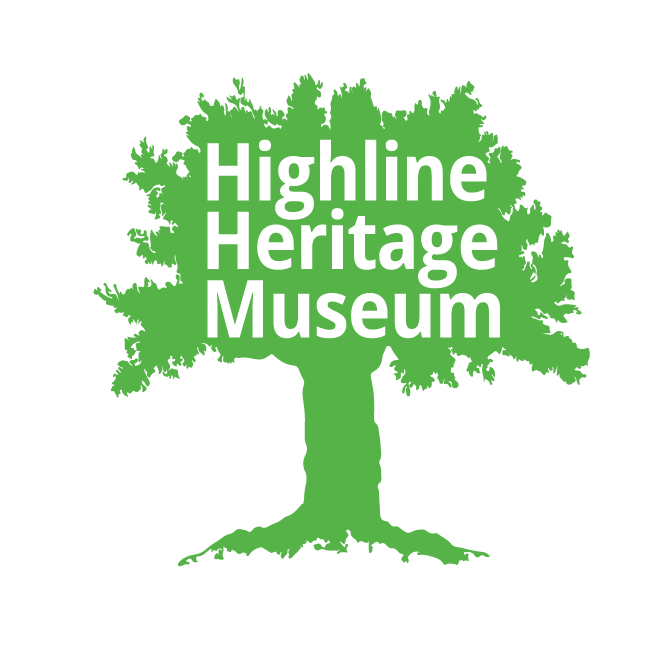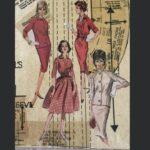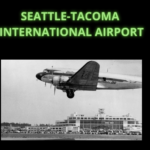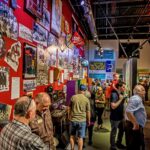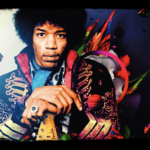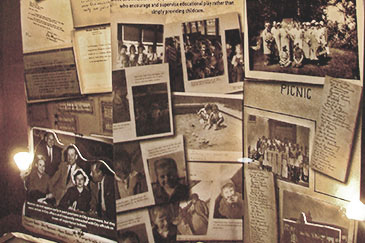Interview with Marie Clare Graddon
with her son Jim Graddon
2012 November 12
Interviewer Barbara McMichael
At Marie’s home in Auburn
BM: Marie, why don’t you tell me when and where you were born.
MG: I was born the 15th of January in 1922 in Moxee City, Washington to George and Laura Cartier. And my mother’s maiden name was Gendron and they were married in the valley also.
BM: How many brothers and sisters did you have?
MG: I had one sister and two brothers.
BM: Tell me about childhood in Moxee City.
MG: Well, we lived in a small house that belonged to one of my uncles and my father worked for him in the fields, alfalfa and hops, and he did the irrigating and that kind of thing for his uncle. For years and years he did that.
And my mother was a homemaker and also she would go out and help the doctors with the deliveries of the farm wives. And she did that for many, many, years. And then of course in those days the mother had to stay in bed for two weeks. So she stayed at those homes and took care of the mother and the baby, and did the washing and cooking, for large, large, farmer’s families. And she did that all winter long. My Dad was at home so he tended to us. He helped us with our homework, and he was very intelligent and he would do all that stuff. So that’s where we were.
BM: Tell me a little bit about your schooling. Was it out in the country?
MG: Yes, in a small village, Moxee City. We were all French Catholics, so we went to the local parochial school. And the girls went for twelve years and the males went for eight years, and then they either went to a public school or they went to Yakima, to high schools in Yakima. And so that’s what my brothers did. But my sister and I graduated from Holy Rosary School in Moxee City. My sister graduated in 1937 and I graduated in 1938. And then the boys went to Yakima to Marquette High School which was a Jesuit high school.
And then the year that my sister graduated from high school, one of the priest from Seattle College came out and he was interviewing and looking for people who would go to Seattle College. And so my sister went, she was valedictorian of her class and I was of my class and so she came here to school.
We had a wonderful principal at the parochial school. She was our home room teacher and principal, as well. All of the high school was in one room. We had freshmen and four other classes so one year she would teach, like, algebra to the freshmen and sophomores and then the next year she would teach geometry. So you learned by infusion because you were right there. And then we went to different places in the school for sewing and for science and for choir. Otherwise we were in that room.
She was a wonderful, wonderful teacher. In fact she had every one of us let her know what we thought we wanted to do with our lives after high school. Well, my sister wanted to be a high school French teacher and I wanted to be a nurse, always. And when we came here to school we had every subject that we needed to go into college because she was that good. And so my sister stayed in college for three years and I graduated from the nursing program in two and a half years in college and two and a half years in the nurses home at Providence Hospital. So I graduated in ’43, in May from college and September from nursing. And so I had my degree and my RN at that time.
BM: Did you go right to work or I know somewhere along here you —
MG: Well I was married in the early spring of that year and so I was pregnant. My husband was in the Navy and so he was stationed at Pasco at that time and I stayed with his parents.
And I did work, I went by bus to downtown to work in a hospital in West Seattle and I worked at Swedish in the nursery for a couple of months.
And then I wasn’t allowed to go over the mountains, in those days you didn’t do that, you didn’t go in elevated areas. So I had to stay here for my first child to be born.
And then when he was a couple of months old, I was allowed to go to Yakima and then I lived with my parents there. It was a houseful because my sister’s husband was a scout in the South Pacific and, in the Army, and my husband was in the Navy, and my oldest brother was also in the Navy. He was on an escort carrier Cassin Young in the South Pacific through World War II. And my younger brother was in high school.
BM: That sounds lively. Tell me, let’s go back a little bit – how did you meet your husband? And tell me his name and —
MG: [laughter]I don’t want to —
BM: Well we can move on —
MG: No, my sister knew a friend of his and we’d all gone to a party in West Seattle and my husband was there, and from there on I went with him.
BM: You made an impression on him.
MG: Yeah. Yeah.
BM: And his name? Your husband’s name?
MG: Lawrence James, but he was always Sunny Jim.
BM: Sunny Jim.
MG: Yes, his dad called him Sunny Jim.
BM: And we should probably mention what Sunny Jim is to the Seattle area that it was a brand of —
MG: Peanut butter.
BM: Yeah. Did he like peanut butter by any chance?
MG: Oh heavens. Yes.
BM: So, then when did he get out of the Navy?
MG: When did he get out? Well, it must have been in ’43.
BM: Well, the reason I ask is I’m trying to ascertain when you came back from Moxee, back over to —
MG: Well, we came in ’45. We lived in Moxee for two years after he got out of the service, in an apartment there, and then we came here in ’45 because there were some doctors that I wanted my children to be going to at the time.
BM: Were you worried about their health for some reason?
MG: Well, yes.
BM: Ok, so tell me a little bit, why did you decide to move to White Center?
MG: Well, we needed to have some place to move, you know, and that was inexpensive. And they were duplexes. They were small, but my children were small too and it was mostly for veteran housing, so that’s what we did. And we lived there for three years I guess before we moved to Burien.
BM: Can you describe a little bit what life was like, all of these veteran’s families and their young children and so on. What was the scene like, how would you describe it?
MG: We were all friends, really friends, yes. And the three people that we spent most of our time with, we faced a park area and so the children, there were swings and stuff like that for the kids to play on. So that’s where they were and I could see them right outside of the living room there. And the twins were too little to do that so they were tethered to the clothesline. They had a long rope, each one of them, and they didn’t know any better, they just played out there by the hour, because the older ones were already out there. We had a fine time, you know, we didn’t know any better.
BM: Were you a homemaker or were you working outside of the home at that point?
MG: Oh, no, I was staying with the children because we had five at that time.
BM: And your husband, what was his occupation at the time?
MG: He was a mechanic in West Seattle, but he was an auxiliary police officer at the same time. So he went with the regular police officers for several years before he went on the force.
BM: And was that, when he was an auxiliary officer, was that in the White Center-West Seattle area or was it elsewhere?
MG: It was any place in King County he went, and he knew the whole county, of course, because he was out there a lot.
BM: And did that concern you? His choice of occupation?
MG: No, we weren’t told to be concerned at that time.
BM: Crime was a little different back then?
MG: Oh my goodness, I should say, yeah. There weren’t the drugs, or children weren’t alcoholics, and, he was a good police officer, very observant as this one is [Jim]. You know, he just knew what was going on in the neighborhood, yes. He worked in the jail for several years. He worked on the check detail where people that passed bad checks, he would go to that business and usually find the person that did it, you know. He was a good officer.
BM: What other kinds of crimes do you remember him being involved in solving or criminals, tracking down criminals? Do you remember any of those stories?
MG: Well, I do, but I don’t know how much I can mention of that.
BM: Okay.
MG: Jimmy has his scrapbook. In those days they gave them articles about the men and what they were doing. Now days they never mentioned who they were or anything, but in those days they did.
And he was good in the sense that they had more freedom. When he wanted to question a teenager, he just talked to him. He didn’t have to have an attorney there, and you know, they just confessed. He didn’t force them to, he knew that they were, but, you know, he was good at that.
BM: Well tell me a little more about home life then. So you were in White Center, living in this duplex, you had five children already.
MG: Yes.
BM: And so you decided at some point that maybe you needed a little more room?
MG: Yes, well that wasn’t our home. We were renting it, and we wanted to have a home. So we scouted all over and we found this one home in Burien on 20th off of 152nd, at 152nd and 20th SW I think it was. So that was a bigger house and a big yard, so we could have a garden and everything.
It was right behind St. Francis Catholic Church and Father Gibony was the pastor there and he lived in the church, up above. And he used to watch the kids play outside.
And we had a big garden and we had a fish pond, and all kinds of nice things for the kids to play.
BM: Tell me a little bit about your garden? What were you growing in your garden at that time?
MG: All kinds of vegetables, you know, peas and beans and tomatoes, cucumbers, everything.
BM: And did your kids help you in the garden or was that strictly–
MG: It was my garden, yes, yes. What the twins would do though, we had a little breakfast nook and at dinner time, they would have their meal, and then they would go out and they’d pick the peas or beans out of the garden and eat them. And I never stopped them because it was kind of fun to see them do that.
And one time, my husband was on duty and he was great for bringing stray dogs, or dogs that were in trouble, home with him. And one time he brought a goat home because he found it in White Center tied to the top of a garbage can. And so he brought this goat home. And there was a big rock in the area next to our house. So he stakes this goat out there, and it would climb this big rock and bleat, constantly. I forget whatever happened to that goat, but I’ll never forget that. The kids loved it, you know, cause it was a lot of fun. There wasn’t any school there or anything at that time.
BM: Tell me a little more about your garden’s bounty. Did you can it?
MG: Oh heavens yes, I canned. We used to go to Yakima and get our peaches and pears and tomatoes for canning, and corn. But otherwise I canned lots of stuff. We used most of the things that we grew, but I canned, and I still do. Yes, I can. The boys love peaches especially.
JG: Oh, yes. Nobody cans peaches like she can.
MG: But I canned vegetables, all kind of pickles.
BM: Tell me what kinds of pickles cause people don’t do pickles very much anymore.
MG: I do bread and butter pickles, mustard pickles. I used to do sweet pickles, and I do dills.
BM: So you probably had a pantry, I’m guessing, at your house?
MG: Well at our house yes, we had a fruit room downstairs – and it was full.
JG: That was the next house.
BM: Ah, okay.
MG: It had lots of shelves on it.
BM: Alright.
MG: I have one here too.
BM: So, how long were you in this house right by the church?
MG: It was three years, maybe two years, because the twins were five when we moved to Seahurst and that was about three blocks away, four blocks away?
BM: And tell why you had to move.
MG: Because the church needed that area for the school and for the playground. And so the parish helped us find this house and it was really nice. I thought I was in seventh heaven when we moved there, you know.
BM: Do you remember the address that you moved to?
MG: 2420 SW 151
BM: Alright, alright. And shortly thereafter some more children came along.
MG: Yes, yes. And by that time, when the five older children went to grade school which was just a couple of blocks up the hill, it was a parochial school, and then I took the bus downtown, cause there weren’t any hospitals in the south end. And I took the bus downtown after the children went to school in the morning to Providence Hospital. And I worked in the operating room until 2 in the afternoon. Then there was another nurse there who had a child and she lived near me. So I would come home with her, and I was home before the children came home. So I was there to do the homework, get changed and fix dinner and stuff.
BM: That’s a busy life.
MG: Oh, yes, and then I quit two months before you [Jim] were born —
BM: May I interrupt for just a moment? Talk a little bit about what it was like for women who worked, but who were pregnant. I know in some occupations if you got pregnant, you had to quit work. But it sounds like as a nurse, you were able to continue.
MG: Yes, I was allowed to work, yes.
BM: Was that unusual?
MG: Probably. I don’t know of anybody else that was pregnant at that time. Those were Sisters of Providence and I had gone to them, you know, for grade school, high school, nurse’s training at Providence Hospital, so I was home there. Yes, yes, I knew the hospital almost all of them.
BM: So, you worked up until about two months before Jim was born in 1955.
MG: Yes, and then in 1958 Highline Hospital opened. And by that time, my husband was working two jobs, bouncing at Maple’s tavern in Burien and then working, of course, full time for the sheriff and he was just up to here with handling drunks, you know. So I took a big step and decided to apply for a position at Highline.
JG: What was it called then?
MG: Burien General. The nursing director was reluctant to hire me because I had seven little children, you know, and anyway, she did, because she thought I was always going to be home with sick kids. But that didn’t happen. They were on a routine. My husband had different shifts, but the children were on a regular schedule. And so they had decent food and you know, they got their sleep and very, very, seldom did I have to stay home with the children.
BM: What was your shift, did you work during the day or —
MG: No I worked 3 to 11, it was actually 4 to 12 because the Director of Nursing had a child and it was too hard for her to get that little person to her mother’s house by 6:30 in the morning. So we started at 8, 8 to 4, so afternoon shift was 4 to 11, which worked out fine. And then I worked part-time at first in the emergency room. And then I was made Evening Supervisor for several years. And then of course, I would have to set up the operating room and everything if there were emergency surgeries. And then I was Assistant Director of Nursing for a long time. So I worked at Highline for 25 years.
BM: I’d like you to, if you could, describe early on what the hospital was like. It was of course much smaller. Can you just kind of describe what it looked like and how many doctors were involved, how many rooms. Whatever you can remember about early on.
MG: It was one building. And that building is still there, but it has been changed, you know it has been added onto. The emergency room is in the same area, you come down the hill. There was one ambulance in the whole area and those people, you know, it was difficult. They didn’t even have a backboard to put the patients on. My husband made them some backboards so they’d have something to transport the patients with. And in those days there wasn’t any 911 or anything like that. So we had doctors on call, there was no doctor in the emergency room. So we had to evaluate the patient and then call the doctor that was on call.
And the thing was, in those days, if somebody had a heart attack they didn’t usually make it to the hospital because they weren’t giving them drugs and oxygen and all that sort of thing out there. So it was rare that we got a patient. Burien, Highline was the first hospital to have a coronary care unit. So that was really a wonderful thing to have, because we admitted a lot of patients to there. And most of them were emergency room and they were treated and left to go or else admitted.
The doctors were just really good. They were all young, of course, at that time. A lot of them had worked in Korea, in that war, so they were young and eager and some of them went to school on the GI Bill. Yes, they were a good, good, staff.
BM: Do you recall any names of the doctors who were involved at that time?
MG: Yes, there was Dr. Pat Dowling, Dr. Floyd Myrick, Dr. Ken Martin, Dr. Gunsul, Dr. Hitchman, Dr. Underhill, Dr. Huchala, Dr. Aiglan (sp?).
BM: That’s plenty.
JG: Where did they all live? Because they all lived close.
MG: They all lived close, yes. At Three Tree Point, and in Shorewood.
BM: Was there any sense of class or anything, the rich doctors and the working class or anything like that.
MG: I don’t believe so, no. They were all about the same age and most of them had been in the service. Of course they weren’t all the same age, but they were well trained and they all got along, they really did as far as I knew.
JG: They also trusted the nurses, especially the ones that knew what they were doing.
MG: It was interesting sometimes. If a patient came that I thought had heart trouble. You triaged the patients and then I would call a cardiac, not a cardiac specialist, well, some of them were. Dr. Andrus and a couple would work with cardiac. And say, Dr. Schaller would say, “Do you think he has a disease?” And I would say, “Yes.”, and he would say, “I’ll be right there.” It was that kind of thing, because there wasn’t anybody there and so you had to depend on the emergency room nurses to triage the patients for them.
We had one doctor who was a dentist before he was a doctor and so he was wonderful for facial injuries and you would call him and he would leave his office and come down.
BM: And can you describe a little bit how Burien and the medical offices that were close by and so on. I don’t know if people kind of knew —
MG: There were none at that time. It was just the hospital. And then they were along Ambaum and those areas, the Doctor’s offices were. But there wasn’t a parking garage. We did have a cancer center, and that was built before I left. And we had doctors from Swedish, or, I forget where they were from. And some of our own staff were involved, too.
BM: I guess something that I’m trying to poke at is – I guess my doctor was Dr. Siverling who had a log cabin. I remember going to his log cabin on the highway, you know Highway 99. And then he moved to Burien because there was this new, fancy medical office building and I just wondered —
MG: He was so friendly, he was so nice. He used to stop by when I was in the office, stop by to say “Hi” you know. He was really, really, nice
BM: He was a good fellow.
MG: Yes, he passed away not very long ago, just a couple years.
BM: But what I was trying to dig at, was how the city of Burien grew once the hospital was there. It seemed to me that more medical buildings were built in order to, for people to serve the hospital, but maybe you don’t recall it that way
MG: There weren’t any doctor’s offices on the campus at that time. Highline bought the ground both north and south and then there was room to build a parking garage and to get office buildings.
BM: Do you know why they selected that site in the first place?
MG: I don’t know why any hospital would decide to sit on the edge of a hill but it’s not the first one. And I have no idea. It was a private enterprise at first.
JG: And who was that?
MG: The Potters, yeah.
JG: And they were a local family?
MG: Yes. I don’t know if that’s the only place they had, but that’s where it started.
JG: And didn’t one of their sons end up with the KOMO air patrol? Isn’t that one of the sons that did the traffic reporting?
MG: I don’t know. I know the wife, I can’t remember her name now, she was an aviator.
BM: So that might have made sense.
MG: Powder Puff something or other. But she used to fly. They were good people.
And Harry Sanislo was, I think, the first administrator, and his father was Captain Sanislo who was a firefighter for Seattle. But his job was to go to all the different schools and talk to the children about fire. And he was well, well, known, you know. He was a very likeable person. And his family was too, of course. But everybody knew Captain Sanislo. And our first administrator was his son. And then we had his daughter, also, was a nurse and she worked at Highline for a long, long, time. She’s still alive. And the retired nurses and other people that worked at Highline have a potluck luncheon every three months in Burien. And we all get together and it’s just really nice. It’s a lot of fun. And she’s still there.
BM: Can you describe for me a little bit of Burien and how it’s changed. What you remember about Burien when you first lived there. The stores you went to, the kind of entertainment that was available to your family, and if you could describe that a little bit.
MG: Well, my family was large so they were pretty self-sufficient. And we didn’t have funds, you know, to go to movies, or anything like that. We did a lot of picnicking, and lots of rides. We did car rides. And when the first five children were little, we had a big touring car and my husband put a big board across the arm rests in the back seat. And all five of them sat up there and they were good because they could see outside and they —
BM: And that was before the days of seatbelts.
MG: Oh heavens yes. I should say. And you know we never had an accident. Of course he was a good driver and we went all over the place, you know.
BM: Well talk a little bit about your destinations and about where you would go for picnics.
MG: Well, we’d go to Saltwater Park or Flaming Geyser. We’d often go to Yakima because there were parks around there and the family from there would all gather. Oh my goodness. North, south, anyplace there was a different park we would go because friends would go with us. So we would have a day of it, you know.
BM: And that’s back when parks were free admission.
MG: Oh heavens yes. And even in the forests, we’d go to the forest parks and they didn’t charge either. Then we would have full gatherings of families like up at, oh what’s that park . .
JG: Easton. The state park just beyond the pass over at Easton.
MG: Yeah, we used to, people would come from Yakima and we’d all meet together.
BM: Would you go camping?
MG: Yes, with the tent. And we went to Sportsman Park in Yakima a lot. And gradually we had a small trailer, then a bigger trailer, and then a motor home.
JG: In inverse proportion to the number of kids at home, I will note. The more kids, the smaller the vehicle that we had. When they were all by themselves, they had a 30 foot motor home. When it was 5 of us together camping it was a 16 foot house trailer. And the same was true of the bathroom at our house.
BM: Okay, talk a little bit about, now that’s something that any family will know. Whatever generation is figuring out. Was it a one bathroom home?
MG: We had one bathroom. And it didn’t seem to be a problem. Since there were 5 boys and one girl, well Susan would get to the bathroom, and then she would go to her room and do makeup and all that. But you know, one showered, one shaved, and they just got along.
BM: Did you have to establish a rule for a 3 minute shower or anything like that?
MG: No, we just never did.
JG: We never had a shower. We took baths, we didn’t have a shower until many of the kids had already left the house and Dad made —
MG: Then my husband built a room on the house and another bathroom with a shower.
JG: So talk about our sleeping arrangements. How many kids in which rooms?
MG: Well, we had 3 bedrooms, one was kind of a big sun room. So we had two sets of bunks in there. So four of them lived there. Then we had an extra bed too because we had people live with us that needed a place to live. So we had those.
BM: Were these boarders or —
MG: No,
BM: Just people who needed a place.
JG: Sometimes relatives, sometimes friends.
MG: My brother lived with us for a long time. He had been in a bad car accident and I was worried that he wasn’t getting treated right in Yakima. So we brought him over here. He was a teenager. And he lived in that room with the boys. I used to take him downtown to Dr. Wyckoff who I knew would tend to him, which he did.
And then we had the cousin of one of the deputies was at loose ends and so he stayed with us for a while. And everybody did fine.
Then when the boys came along, we had the extra bedroom. By that time Jim had built another bedroom, so two people were in there. Then Gail, there’s 19 years between the oldest daughter and the youngest daughter so the young one’s crib was in the older daughter’s room. So it worked out fine.
BM: Tell me how you managed meal times. And of course part of this time you were working. But how did you feed a family of that size?
MG: Very easily, you just cook another potato or something. For afternoons, I would have the house clean, and dinner was ready. And by that time, the oldest kids came home. I was still there so they would change their clothes, do their homework. And they knew, most of the time their Dad would come home, he’d be on the graveyard shift or the day shift and it worked out that way. You know, we were organized, you have to be when you have that bunch. And I made their clothes and did lots of washing and ironing, of course.
BM: Did you have a clothesline?
JG: Oh, my yes. A huge clothesline.
MG: Oh, yes, yes. And with the boys going to parochial school, they had uniforms, which was an absolute blessing, because there wasn’t any controversy about what you’re going to wear or anything. And I had pants stretchers, so when I washed their pants I would put them on stretchers and they went down in the basement. And so they were always neat and dressed cleanly.
JG: So we had a big clothesline outside, multiple clotheslines outside, and we had clotheslines in our basement for when the weather wasn’t as good.
MG: No dryer, of course at that time.
JG: You need to tell her about your, where your uniform hats went, where your nurse’s caps went because in those days, all the nurses wore nurse’s caps.
MG: Where it went?
JG: Where did you starch it and put it? This is one of my favorite memories
MG: On the refrigerator. I used to wash it. Well when I was in training, we weren’t allowed to fold our caps ourselves. Sister Zefren was our little French nurse and she watched us all the time and she would fold our caps. Of course when I graduated, I had to do my own and I’d starch it really, really, stiff.
BM: So tell me a little about that. Talk a little bit about every nursing school had its own —
MG: It’s own uniform.
BM: And its own style of folded cap.
MG: Oh yes. Every one was different.
BM: You know nurses now-a-days don’t do that, so I’d like you to just describe that a little.
MG: And of course we always wore white, you know. So people knew who you were. And you always wore your cap. I wore mine long after everybody else did. And you couldn’t see it because I had it right here on the back of my head. Dr. Evans used to laugh at that. He couldn’t see my cap.
But, when we were in training we affiliated to other hospitals around the area and I went to Steilacoom for my psychiatric.
There was a tuberculosis hospital in South Seattle and I would have to take the bus from Seattle and go out to Georgetown. And in those days they didn’t have any kind of medications to take care of the tuberculosis, so they all had to be outside. They thought that fresh air was the best thing for them. Those poor people, you know they would be so cold, outside all the time. They would come in once a week for a shower, which is what we did. And then that was for three months out there. At that time what they did if part of the lung was collapsed, they would insert oil into that area. And of course it would be filled then.
Oh my goodness, the things that used to be done.
And then for the Public Health nursing, we went, if it was a county, we went with the Public Health Nurse to the schools and all that.
Part of our time was in the city, so we had to go by ourselves and we were in uniform, not white, it was navy blue. And we had bus tokens and we would go. It was very strange, but we were told that the cleanest thing in some of these tenement houses or slums, would be newspaper. So if they had newspaper, you would unfold it and put your dressings on that and change dressings or do your injections for diabetes insulin, yeah. And I wasn’t very old, and I was never afraid to go into those places. And I think of it now, and my goodness. You know they’d think you had drugs in your bag or something like that. But we just did it.
BM: Now you mentioned working in the schools also, that was as a Public Health Nurse?
MG: Yes, with the Public Health Nurse. Especially for the county because we didn’t have the transportation, you know. So we’d go in and help give vaccinations and that kind of thing.
BM: I remember the long lines at school when the nurse would come in and, in fact, I remember when one boy, they would test for TB and one boy was taken away immediately because he had tuberculosis.
MG: Yeah, those were all good experiences.
BM: Now did we finish your story about the cap, though. How did you clean your cap, how did you fold your cap? I mean that’s something that we don’t even know about anymore. Was it a square of fabric, or what was a nurse’s cap?
MG: Each one was different [leaves seat]
JG: She’s probably going to go get the nurse’s cap.
BM: Well, that’s fantastic.
JG: And I wish we had her nurse’s cape. I actually have it at our house. They were worried about the flooding here from the river, so we moved some of her more precious things away. One is this just remarkable cape that she has had.
The relationship that, particularly, that she had with the doctors, though – they were all family friends. Dad would hunt with them on occasion. My older brothers worked in their yards, my older sister worked at the hospital, and we’ve had other relatives married into the family that worked at the hospital. So we knew them all very closely. Many of us went to school with their kids.
BM: Alright, here we go, this is going to be fun. Now let’s see if I can get this.
MG: I don’t think I can do it [trying to fold nurses cap].
BM: [Marie holds up the flat cap for the camera] So that’s the basis of a nurses cap, how about that.
JG: And that would be plastered to the front of our refrigerator.
BM: OK, and you see the “SU” I assume that’s for —
MG: Seattle University
BM: Yeah, OK.
MG: After a while it was —
BM: Yeah, changed from Seattle College.
MG: [Demonstrating how to fold cap] Then you take this, I don’t remember, this came down, something on that order. It was deeper than that of course.
BM: And then would you secure it to your head with bobby pins?
MG: Yes.
BM: And so the nurses at a hospital would have, there would be different kinds of folds, so there’d be —
MG: They didn’t all start this way [showing flat cap]. They all were different, yes. And Swedish was the most elaborate. And then when we trained, even in Steilacoom, there were nurses from Swedish there, and Tacoma General and from all places. And they still wore long skirts, that were like pinafores. Blue and white pinafores. They were really neat. I’ve got pictures back when we were there. So Sister Zefren had to do these. I knew how to do mine pretty well.
JG: Given a few moments and she probably would be able to.
MG: It’s been many, many years, and I don’t know. [trying to fold cap] That’s not right. And this came down like this. It’s stiff.
BM: Yeah.
MG: This is how it ended up at the end [showing folded cap], something like that.
BM: Yep, that’s pretty neat.
JG: So there were other hospitals in the Burien area.
MG: In Seattle because they didn’t have psychiatric. They didn’t necessarily have pediatrics. I did my pediatrics training up at Children’s, but it was on Queen Ann Hill at that time. And we had lots, and lots of students there. And they came from all of the different hospitals.
And that was the time when there was polio. And it was –what was her name? Sister — the one who decided that it was a muscle disease. And so we had these washing machines on these huge units of children that were paralyzed with polio. And you had hot water in the washing machine and you had wool and pieces of material. And you would dip them in the hot water, wring them out and then put them on the children’s bodies because –Kinney – Sister Kinney – remember her? She was the one who started that in the Midwest or something, and felt that this was the cure for these muscle contractions. Or whatever was causing polio that they thought in those days. And I liked babies, you know, so I had a hard time with that.
JG: What about Riverton was a hospital, and Standring.
MG: Standring was a osteopathic hospital.
JG: And those were different somehow?
BM: Well talk about the difference between —
MG: Well, we always thought that they weren’t trained as well as the regular doctors, and they weren’t. But now a days, I think they are pretty much. And they’re being accepted in almost all the staffs now.
BM: It was considered an alternative kind of medicine.
MG: Oh, yeah. And then Riverton Hospital was a hospital for the tuberculosis patients in Alaska to be treated. Dr. Ballard and Dr. Evans were chest surgeons. And they went over there. Before this started people were doing surgery and that kind of thing. But they lost a lot of patients and they didn’t understand why. Well it was because they were too hot. They had all these drapes on, and there was no air conditioning, and that’s what that did.
JG: And they’d come from Alaska.
MG: Well, yes, yes. And they needed chest surgery, you know. Well when the hospital opened, Burien General opened in August of ’58, and I was hired at that time. Well, I didn’t start at that time. I was sent over to Riverton because they didn’t have a scrub nurse for the doctors over there. So I was there until the middle of January, before they got all their staff. And so that was an experience, yes. To be doing chest work with those people.
And of course at Providence we had Fred Hutchinson and his brother was a doctor at Providence. And he was a cardiac surgeon. And I scrubbed with him one time. He would go around the state and do surgeries, and he brought his staff with him. And he had worked in southwest Washington one night, and spent quite a bit of time in one of those hospitals and he had surgery the next day at Providence. And I was circulating in the room. Well it was really, really hot and we didn’t have air conditioning. So gradually, every nurse fell out and I was the only one left. I was from Yakima where it was hot all the time.
So I worked with Dr. Sauvage. I’ll never forget that. You know, he’s still alive and around. He’s the one that started all that cardiac, you know teams of cardiologists that did surgery, that did surgery on my husband. He didn’t do the surgery, but one of his teams did. And he would come at 2 o’clock in the night, he’d come and check all those patients. I don’t know when he slept, you know. That was really interesting.
BM: What other memories would you like to share about being a mother in the Highline area, being a nurse at Highline Hospital. I probably have not touched on some things that you might think are important to share.
MG: Well, I think that you can be a mother and work, you know, if you’re organized, and don’t feel sorry for yourself or whatever. And just —
BM: Thank you. That was something that was probably fairly unusual. Most mothers were stay-at-home mothers, I think when you were both a mother and working.
MG: Yes, well they weren’t really trained for anything either. But nursing was a big part of my life. And the family, I don’t believe suffered for it cause they were always well-fed and tended to and I was there a lot of the time, of course.
When I worked, well I only worked graveyard one shift and that was when there was a strike. The nurses struck and that was for six weeks and it was horrible, it was horrible, yeah. Because we didn’t have anybody there. I was in the nursing office, but there weren’t any people in the delivery room and things like that. You had to call them if somebody came in. And so I knew operating room and emergency room, but I had never worked there in delivery. I worked at Providence, of course, but not there. It was difficult.
BM: Do you remember what year that was?
MG: No. We had a head nurse in the cardiac unit that came. Good thing some of the nurses came, not too many.
BM: Did you feel the nurses had a good reason for striking? Did they get something as a result of the strike?
MG: I don’t think they did, much. I don’t remember, it was a long time ago.
BM: Marie, tell us about the fish market in Burien.
MG: Yes, there was a fish market right on 152nd and we used to go there quite a bit because they were very good. One time, the butcher for some reason, cut his hand really badly and there wasn’t any 911 or anything in those days. So my husband was on duty and he somehow got to the store and he bandaged the land and then he took this person to the hospital and stayed there until he was tended to. That man was so grateful that he had saved his hand he wouldn’t let us buy anything. So we had to quit going there because he wouldn’t let us buy anything. I don’t remember his name.
BM: Well, Marie thank you so much for your time.
MG: You’re very welcome.
